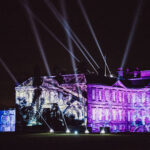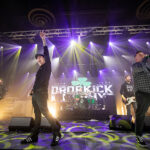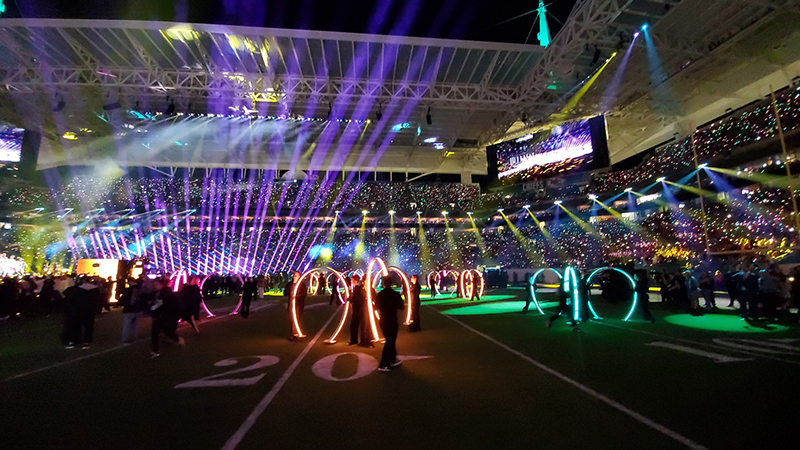
PixMob Lights Up the Stands and Field with Recycled LED Wristbands
Super Bowl LIV took place on Feb 2 in Miami’s Hard Rock Stadium with a halftime show that brought all the heat and sizzle one would expect from a Latin themed spectacle. While much of the production followed a formula that has worked flawlessly through past presentations (i.e. beautiful tiers lined with moving lights, an LED stage, fireworks lining the roof), the products that garnished their fair share of the WOW factor this year were the LED bracelets as well as the LED arches that adorned the field, illuminating in synced cues at opportune times. The LED bracelets that patrons wore to the show — the first ever to be constructed from recycled plastic and parts — were provided by Montreal-based PixMob.
Having been around over 10 years now and employed on over 2,000 shows, PixMob was certainly up to the challenge of doing this show (or any sized event for that matter). For years, they have been using their products to make the audience an integral part of each performance, including the 2014 Super Bowl halftime show, where Bruno Mars and the Red Hot Chili Peppers performed.
PixMob can best be described as a wireless lighting company that brings the audience right into the show. Each audience member gets a wristband with two LEDs, which then gets control via infrared signal in dedicated zones of the stadium. In effect, each person becomes a pixel on a huge screen. While this concept may not be new anymore, the fact that the wristbands are now being made from recycled material — is a huge plus for our earth.
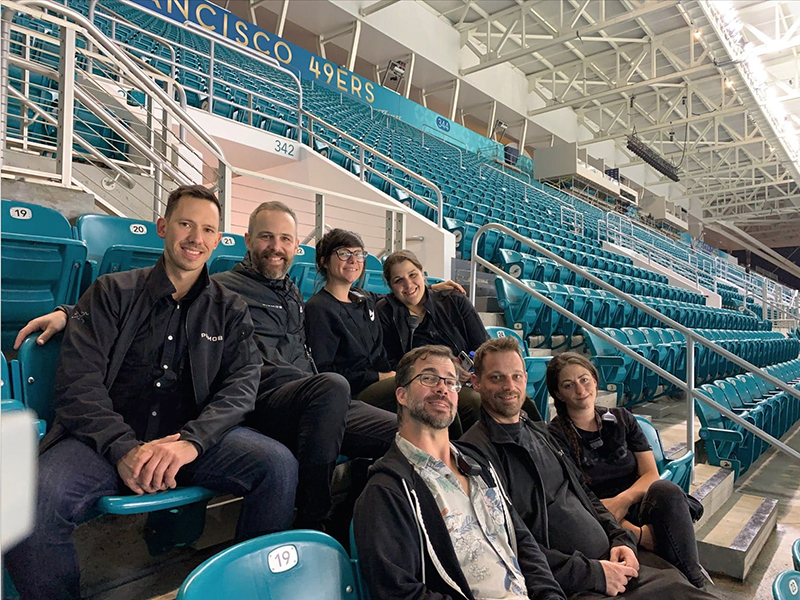
Inspired by the Artists
PLSN talked to PixMob about what drove the decision to start looking after our planet, with a focus on the products they built. Jean-Olivier Dalphond (J-O), president of PixMob, was on-site during SB54 and was one of the key players in this collaboration. He comments on how they came to a decision to use recyclable plastic and parts for their bracelets. “Artists drove these developments. When we were discussing the [Spice Girl’s] ‘Spice World 2019’ tour, we had Geri Halliwell [one of the artists] reach out to us to express her concern about plastic in the ocean. She asked whether we were working on solutions. She was 100 percent right.”
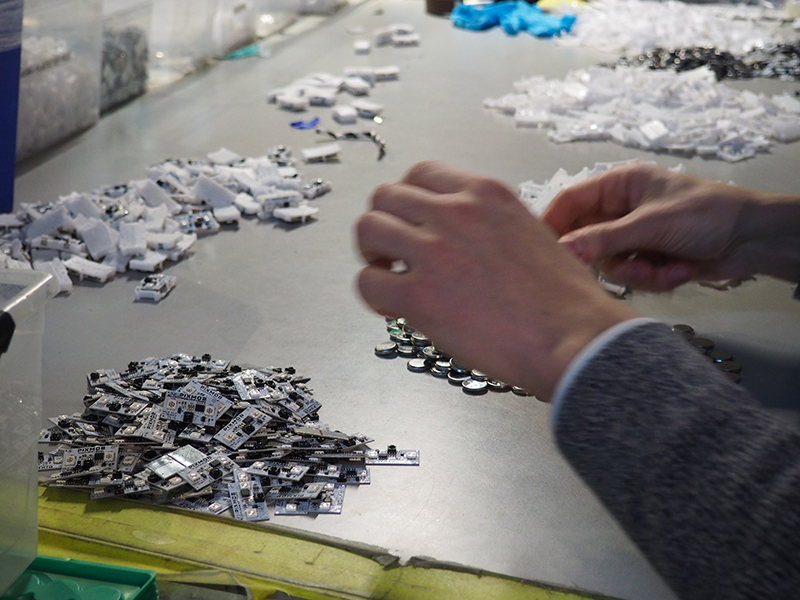
“There wasn’t enough time for us to modify the product for that tour, though with their production team, we put in place a recycling program where over 40 percent of the units deployed were recovered,” J-O says. “Nonetheless, we reoriented our product team’s work and decided to go all-in to find a new, manufacturable solution. It’s easy enough to make a wristband with some percentage of the parts coming from being recycled, however we decided to go 100 percent recycled. That was a challenge that took us a few months to solve. We were encouraged by LD Tim Routledge’s support of the idea, who utilized PixMob on the Spice World tour. This Super Bowl was our first event with the new X2R. It’s an important step in our journey towards sustainability, but it’s not enough; there’s more to come in the next six months.”
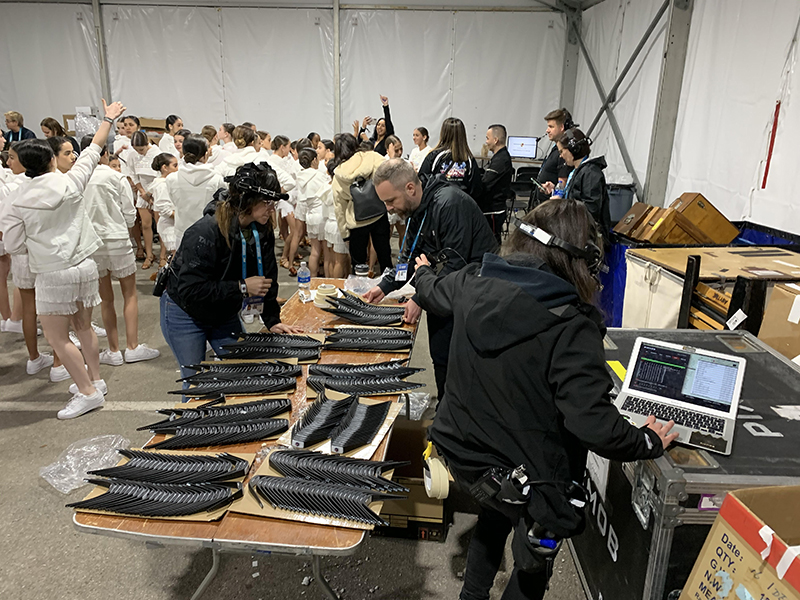
This led us to ask J-O where they source the correct recycled plastic for these bands. “The type of recycled material we use (TPE, or Thermoplastic Elastomers) comes from manufacturing rejects as well as post-consumer objects containing soft plastics like cell phone cases and shoe soles. But that’s only half of it. The large majority of our events have bins at the exits of the venue to collect the attendee’s wearables. Our roadmap towards more sustainable business practices began and will continue to thrive on the success of our recycling program, which has allowed us to collect close to two million wearables since 2018.”
All of PixMob’s wearables are refurbished in-house by a dedicated team. This allows for quality control of their products to ensure their perfect functionality upon redeployment. Yes, the batteries and LEDs themselves can be used again. Defective parts and batteries are recycled by certified e-waste partners.
The new individual bands go by the name of X2R now. For this Super Bowl, that meant 68,000 fans in the seats each had a wristband, with an additional 800 fans on the field wearing four each. Some 11,000 LEDs were utilized in the custom-built arches on the field as well.
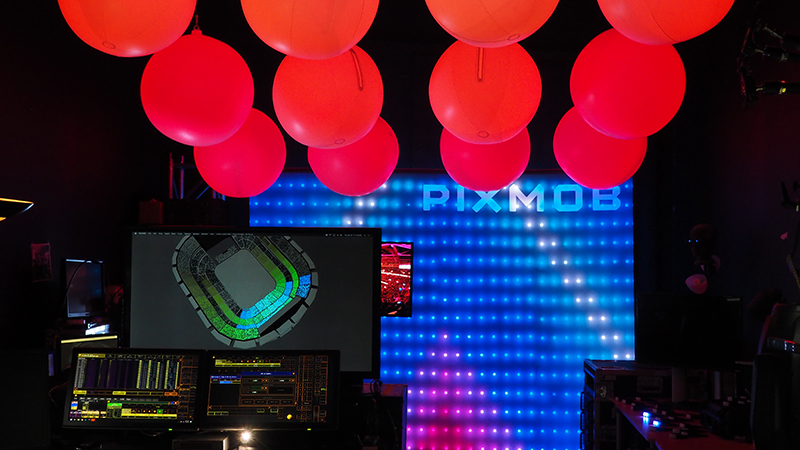
Programming the Pixels
At first thought, one might think programming 82,000 pixels can be a bit of a nightmare, but Rafael Linares, creative consultant at PixMob, assures us it’s far from it. “The stadium was divided into large sections to create our effects. Everything was programmed on-site by Eric Marchwinski on a grandMA console. We used our proprietary visualizer to view the show in a previz environment. The whole process was very collaborative with the client’s team, for the wristbands to seamlessly integrate into the show. Wristbands were then distributed to the seats according to their specific group and section.
“Our technology allows us to create very complex and diverse effects, while our wristbands can recreate any color in the RGB space [16 million different color combinations],” Linares continues. “This allows us to perfectly match the rest of the production to create an immersive experience for the fans.”
The beauty of the PixMob system is that the operators only need to control one fixture. All commands are sent to the LEDs via their IR transmitters. While the system uses multiple transmitters to fill the whole venue with IR signal, all transmitters are addressed to the same DMX channel. The whole PixMob part of the show was controlled through a single fixture with 22 DMX channels.
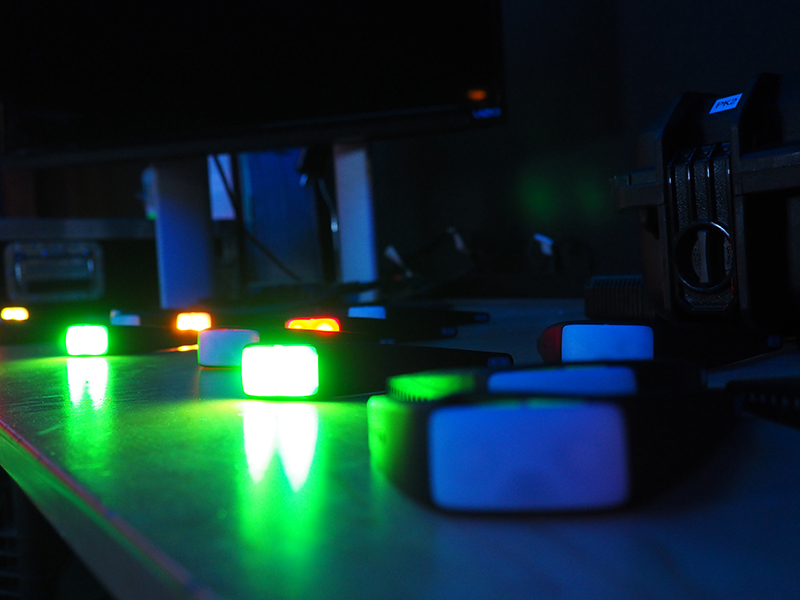
Rafael expands on the programming. “The creative possibilities come from the use of control groups, distributed in up to eight layers. This means that we can split the seats, cast and field props into a maximum of 31 groups to create a certain look, and we can have seven more of these looks.” All of these groups are pre-recorded on the pixels prior to the show. During the show, the PixMob transmitters recall the appropriate layer and trigger the groups according to the creative looks to achieve. “It is a fairly simple system that can be scaled up as much as we need, because there is no limit on the number of pixels per control group. So controlling a nightclub show or the Super Bowl takes the same amount of DMX channels.”
J-O notes that “there were 54 individual arches with two sets of PixMob pixels mounted on them. We had the possibility to control each set separately (inner and outer set). Their first formation on the field had them grouped into the 18 individual pods with performers inside. PixMob provided the wireless LEDs mounted in the arches, which were designed by ShowFX.
When asked if his company employs someone else’s software to previz and control the looks without 82,000 LEDs on the field in advance, Dalphond explains their way of programming this event. “The PixMob R&D team developed the PixMob Visualizer, a 3D pixel simulation software that lets us design the layers and groups distribution. It takes live Art-Net data from the console to render the show in real time. It has become a must-have tool for show programming and visualization for the rest of the production team to review the show without the need of having real pixels in the venue.
“In addition to the 3D visualizer, we brought two small cases with 32 hardwired real wristbands to be able to monitor the real life response and color mix of the pixels. This lets us make sure that the colors and the timings programmed in the show match the real pixels.”
In conclusion, J-O adds, “The combination of these two proprietary technologies allows us to fully pre-program a show that will be played back reliably when the real pixels are in the hands of the fans, props, and cast.”
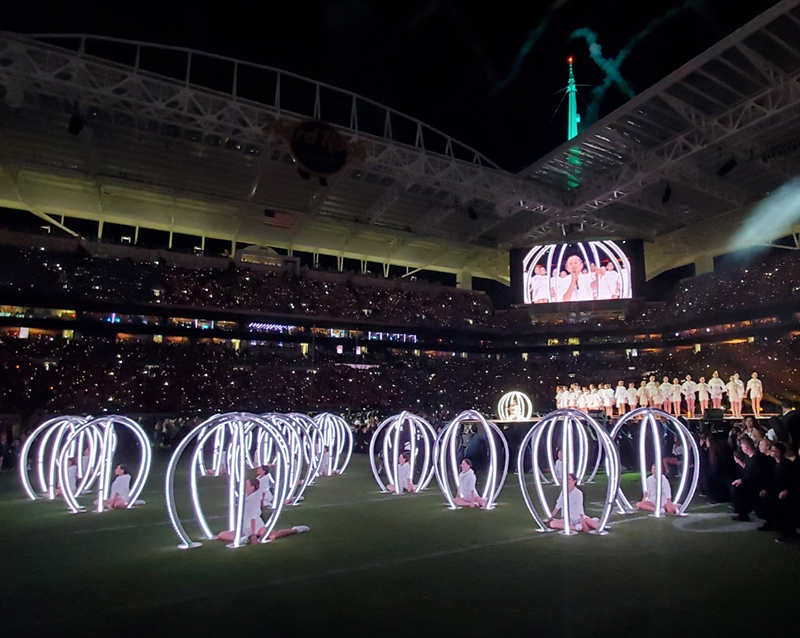
For a 360° view of the PixMob gear in action, go to plsn.me/SB360. For more on the PixMob Visualizer, check out www.plsn.me/PMViz
